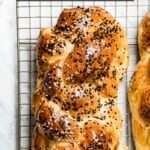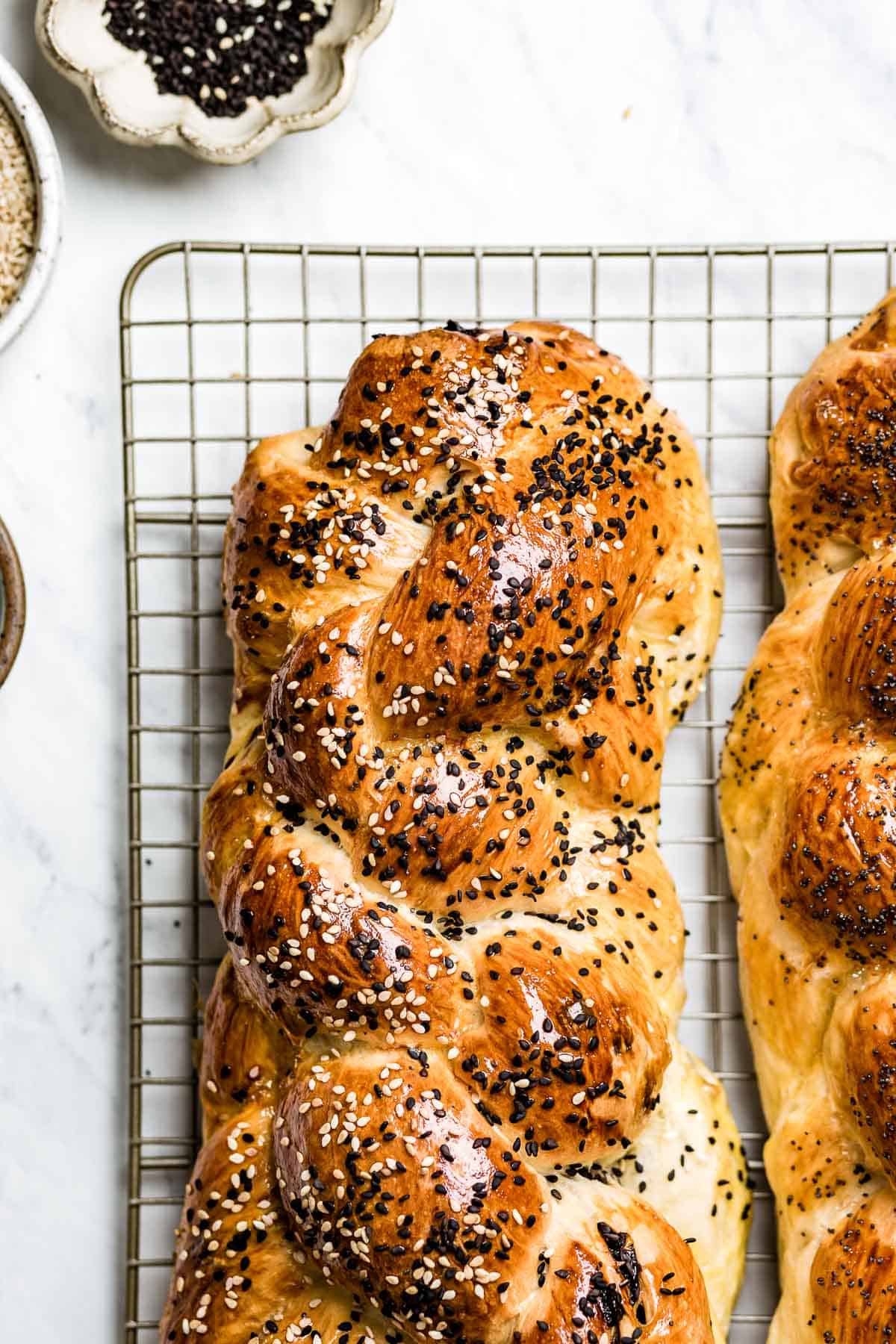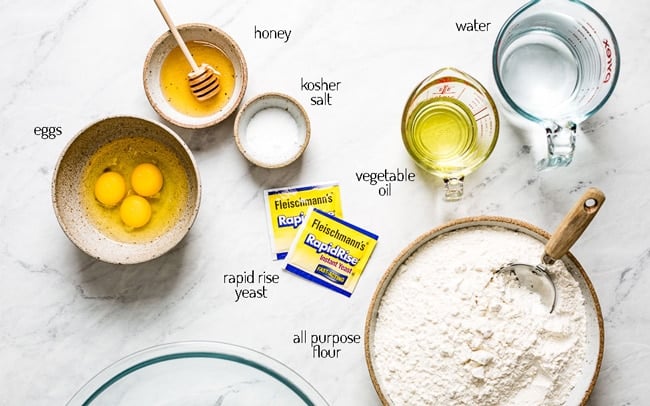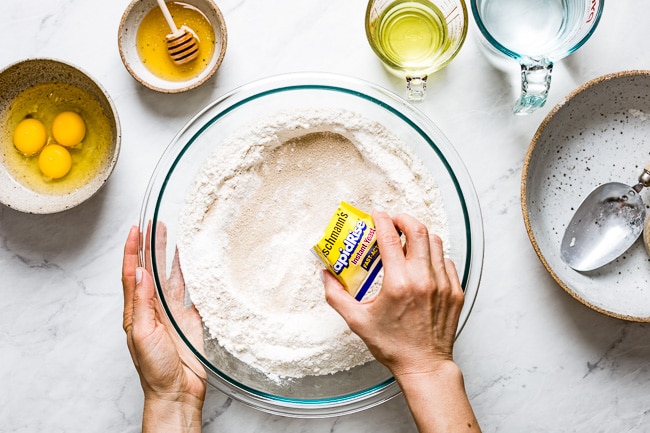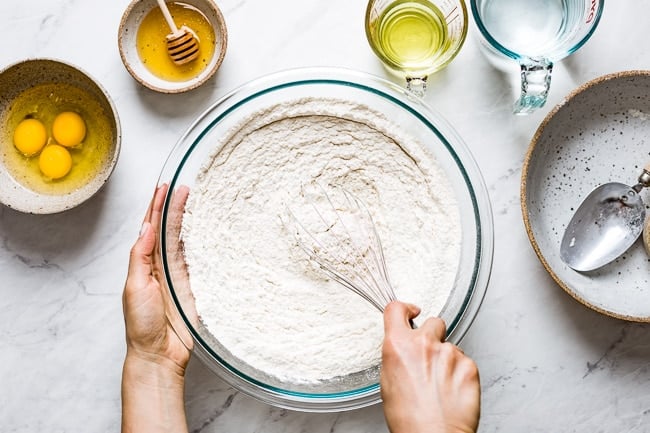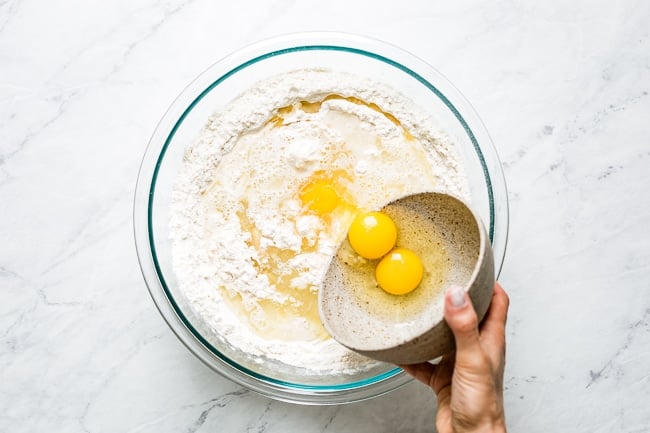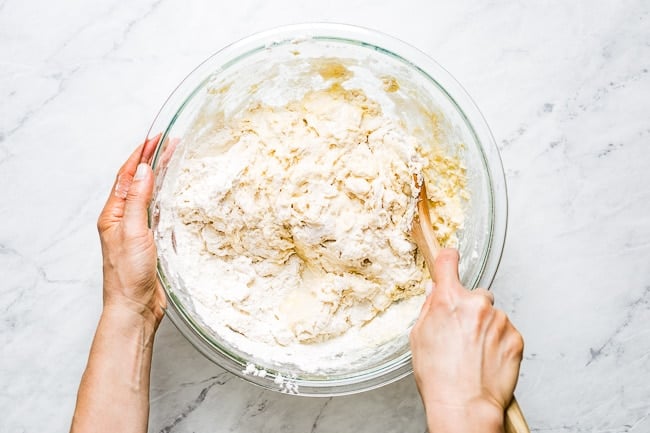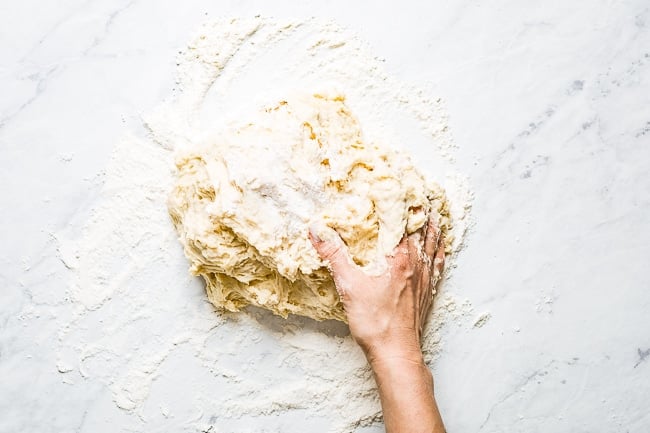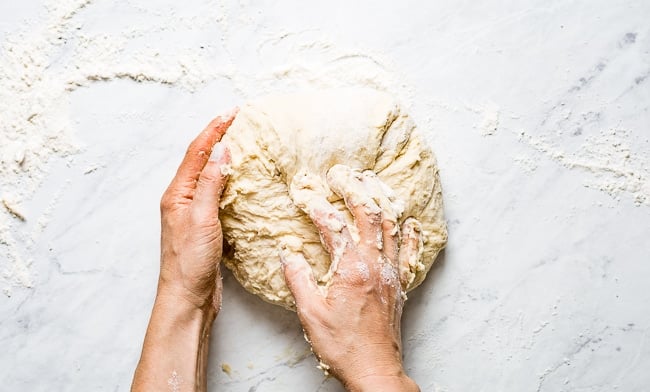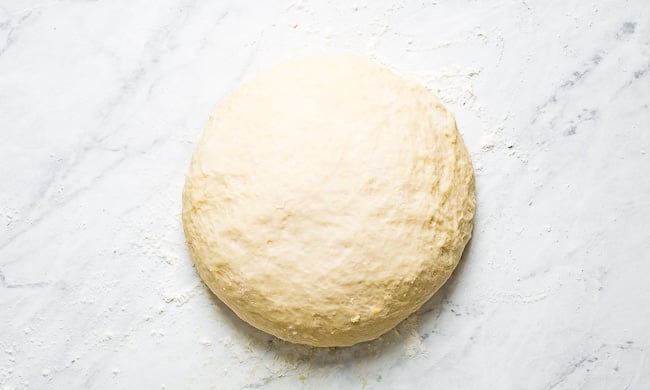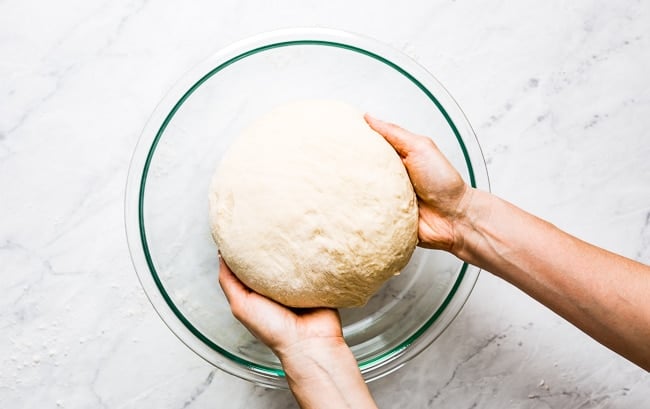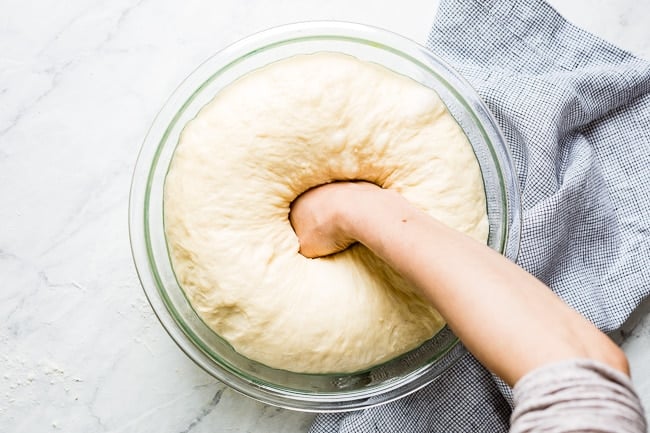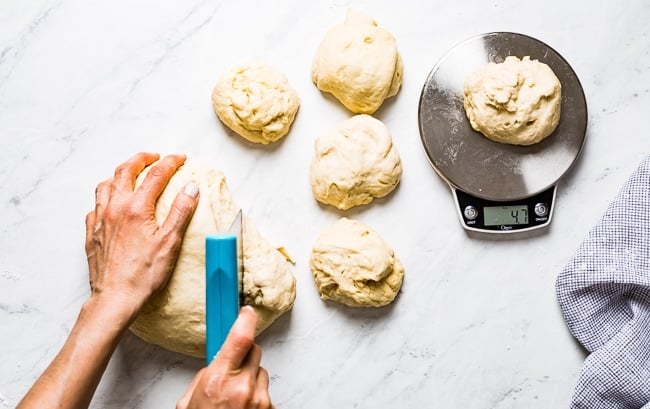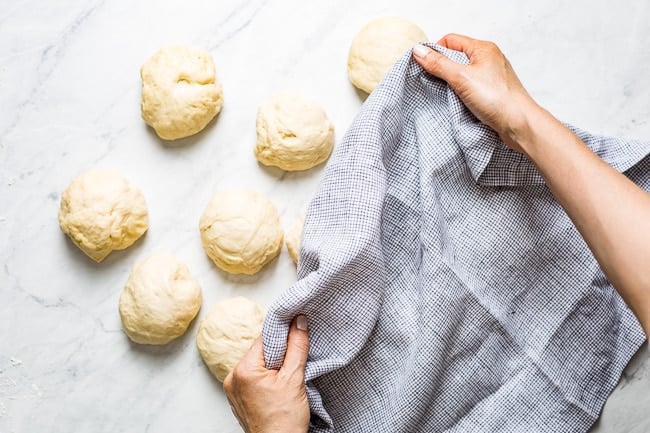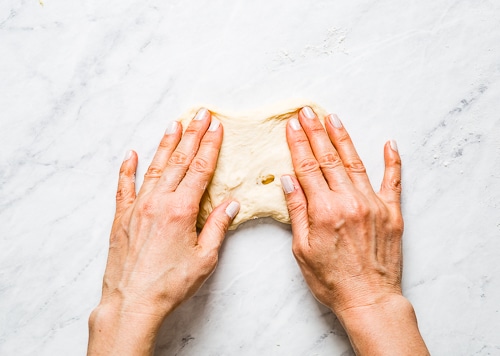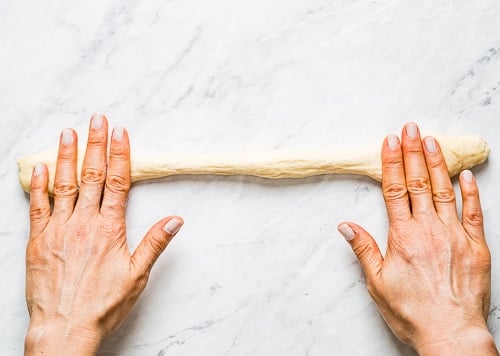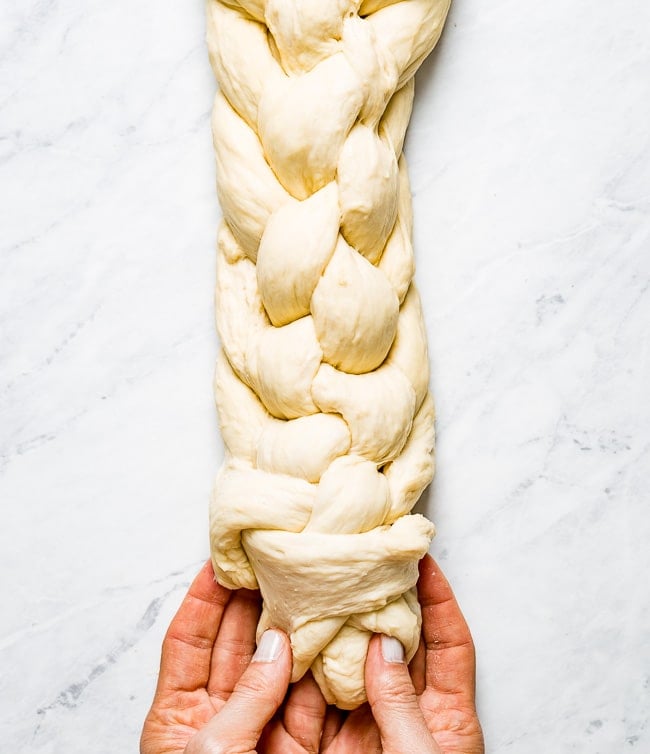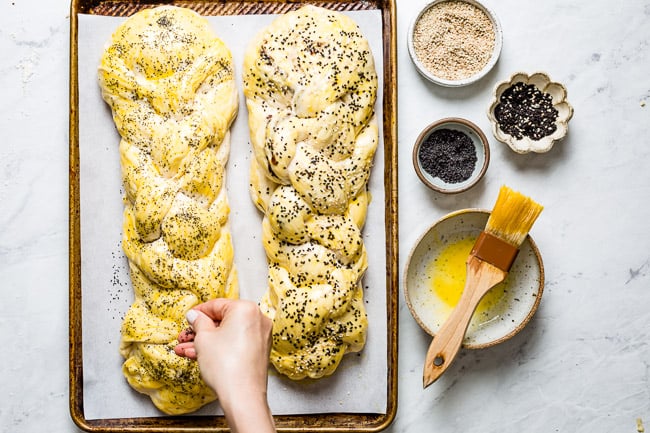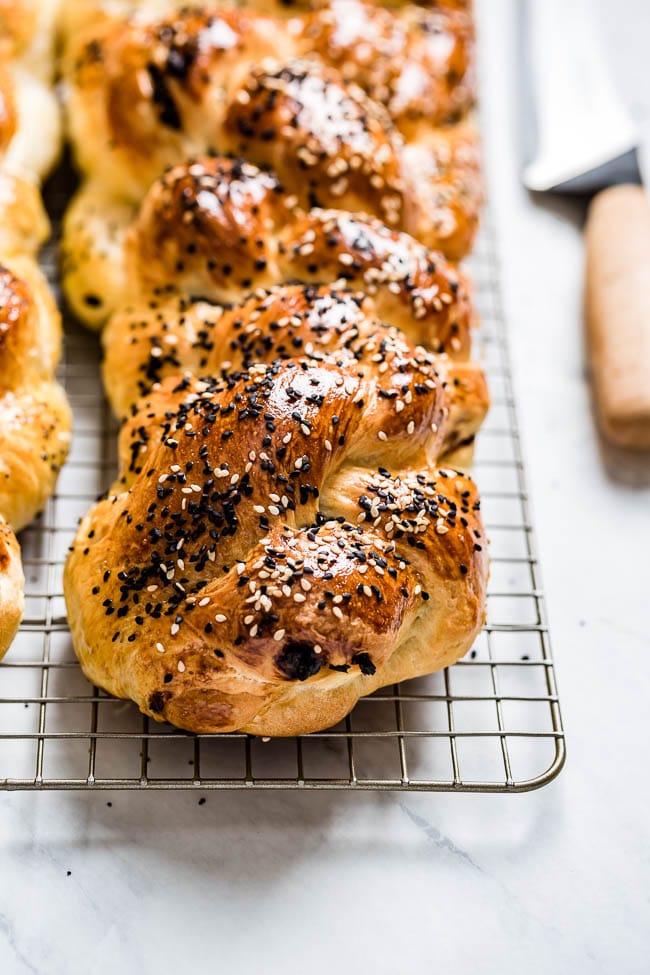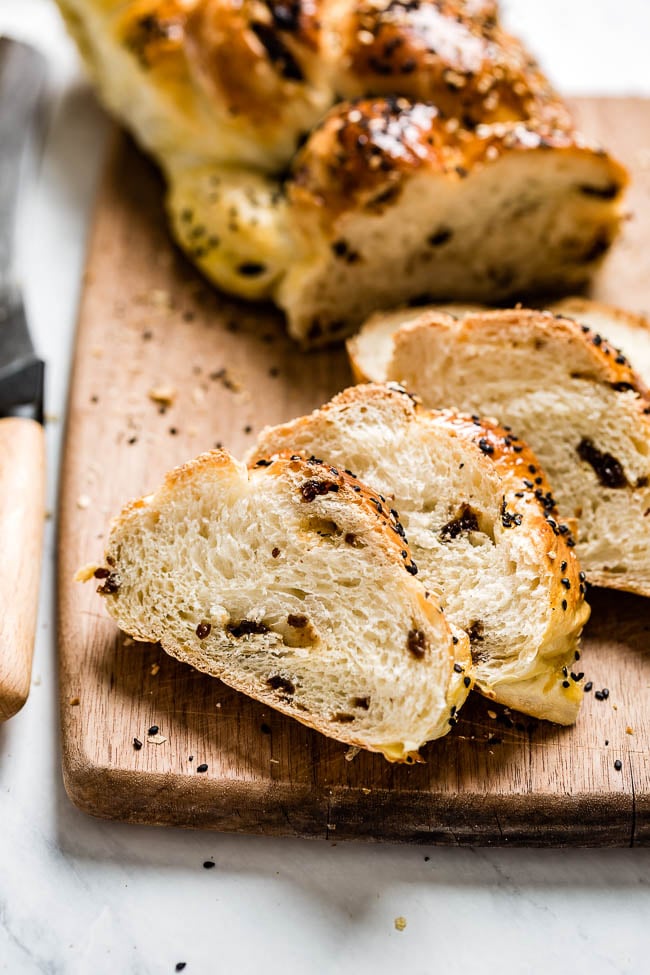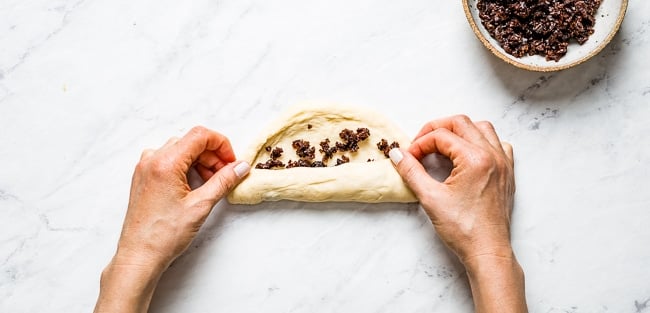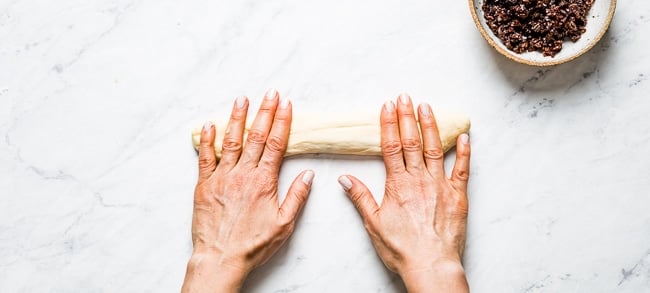Looking at the pictures you might not think so (and even feel intimidated), but I assure you, after reading this post with all my tips and tricks and watching the video I made on making Challah from scratch, you will succeed in making this Jewish braided bread in your very own kitchen, even if this is your first time.
What is Challah bread?
Challah is a traditional Jewish yeast-risen egg bread served on Shabbath or throughout the year on Jewish religious holidays. What makes it different is that it is traditionally made by braiding strands of dough and it is surrounded by tradition and loaded with symbolism. While most people refer to this bread as Challah bread, the proper name for this Jewish bread name is Challah. It is pronounced as haa.luh. Throughout the history, it has also been referred to as:
Shabbath BreadJewish Celebration BreadJewish Knotted BreadHollow BreadKitke BreadRosh Hashanah Celebration BreadJewish Sweet Bread
Ingredients
The list of ingredients for my easy dairy-free challah recipe is as follows:
All purpose flourKosher saltDry rapid rise yeast (not active dry yeast)Large Eggs (at room temperature)Vegetable oil – I find that the best oil for Challah is an oil with very minimal flavor like avocado, grapeseed, or canola oil.Lukewarm Water (80-90 degrees F)Honey or sugarEgg wash & optional toppings like sesame seeds and poppy seedsNonstick cooking spray or more oil to grease the bowl
How to make it using my easy foolproof method?
The process of making this braided Challah bread recipe has 6 steps: Below you will find step-by-step instructions on how to make my honey Challah with helpful photos.
Prepare & Mix The Ingredients:
Start with the dough. To do so:
How to knead the dough?
To knead Challah dough:
Let The Dough Rise
Divide and roll the dough to prepare for braiding:
I find that the best way to get even strands is to use a kitchen scale, measuring the initial weight of the dough and dividing it into equal pieces to get even strands. As you are kneading, you can add in a little bit more flour at a time until the dough is easily rolling without sticking to the counter. At the end of 10 minutes, what we are looking for is a soft dough that is easy to knead without sticking to the surface. And remember, we are not trying to incorporate more flour into the dough. Rather, using just enough to make sure it is no longer sticking to the counter as we are kneading it. My egg challah recipe here makes two loaves. Since I am planning to make two six-strand braid loaves, I will need twelve strands. We would have to do a little math here, but I promise it is worth your time. The total weight of the dough is 54.4 oz (1542 gr), which means I need each strand to be 4.5 oz (127 grams). On a lightly floured surface, divide the dough, measure one by one on a kitchen scale, and put them aside. When completed, roll each piece into a small ball, set aside, and cover with a clean kitchen towel to prevent them from drying as you are working on rolling out the strands and braiding. If you do not have a kitchen scale, you can eyeball it as well. Do the best you can to cut them in equal portions.
How to roll the strands?
When ready to roll, take each piece, gently push it into a small rectangular (using the heel of your palm) and roll it out by starting in the middle and toward the edges. Gently pinch the seam and continue to roll out. If at any point it becomes difficult to roll out just let it rest for 5 minutes and roll it again. In the end, we want our strands to be around 12 to 13 inches long.
How to shape it? (6-Braid Challah Shaping)
Challah is made in various sizes and shapes, all of which have a meaning. Braided Challah is the most common of all those shapes. Braids can have two, three, four, or six strands, which all have different meanings. In this post, I am featuring my six-braided Challah recipe. Follow the written instructions below to braid or watch the quick how-to video below: To braid:
Step by step video showing you how to braid six braided Challah bread:
Challah Baking Instructions
When your Challah is braided, transfer it onto a parchment paper-lined large baking sheet and brush it generously with an egg wash (one egg mixed in with 1 tablespoon of water). Let it rise, uncovered, in a warmer part of your house for 45 minutes to an hour or until it is almost doubled in size. Before baking, brush it with the egg wash one last time and sprinkle it with sesame or poppy seeds, if using. Place it in a preheated 350-degrees F temperature for 35 to 40 minutes or until golden brown. When you thumb the bread, it should make a hollow sound. Immediately transfer it onto a wire rack and let it cool for at least 45 minutes before serving.
Can you make the dough the night before?
In his book, Artisan Bread Every Day (affiliate link), Peter Reinhart recommends letting the dough sit in the fridge overnight for a more flavorful Challah recipe. If you decide to refrigerate your Challah dough, follow the below steps that I learned from his book:
How to store & how long will it keep?
I think this Challah bread recipe is best on the day it is baked. However, it will still be good for the next 2-3 days if you keep it in an airtight container. If you want you can freeze leftovers. To do so: When ready to serve, to defrost: I do not recommend freezing raw braided Challah bread.
Can I make Challah using a standing mixer?
You sure can. Simply place all the ingredients in the bowl of a stand mixer attached with the dough hook. Mix in medium-low speed (8-10 minutes) until the dough is fully mixed and no longer sticky. You may have to add in more flour based on the temperature of your kitchen and the humidity levels.
Recipe Variations
Challah recipe with honey versus granulated sugar:
Most people use honey as the sweetener and make a round Challah during the Rosh Hashanah celebrations. I prefer using honey as my sweetener as we follow a diet made with natural sweeteners only. If you want to use granulated sugar instead of honey, you would have to make a few simple adjustments. In the recipe below, you will find instructions to make it with granulated sugar as well.
Can I incorporate raisins or nuts into my Challah?
You sure can. Honestly, until recently I have never made Challah with raisins but after I was introduced to it by a local baker, now I am hooked. If raisins are not your thing, you can also fill your braids with chopped nuts, chocolate or go in the savory route and use chopped olives or even sun-dried tomatoes. You can add the raisins to the dough during the kneading process or better yet incorporate them into the strands as you roll each one. To do so: If, at any point, it becomes difficult to roll, let it sit for a few minutes and roll it again. And keep in mind that this is not going to be perfect, some raisins will bulge and that is perfectly fine.
A Few final tips for the best Challah bread recipe:
Other bread recipes you might also like:
If you loved this recipe for Challah bread, be sure to check out the bread recipes below to up your bread baking game:
SimitNo Knead BreadBrioche BreadOlive Bread RecipePumpkin Bread Pudding RecipeNeed more inspiration? Check out all our homemade bread recipes
Recipe adapted (and scaled down) from Leah Cooks Kosher’s Challah recipe with changes to her recipe. This recipe was originally published in August 2014. It has been updated with new photos, information and minor changes to the originally published recipe in September 2021.
